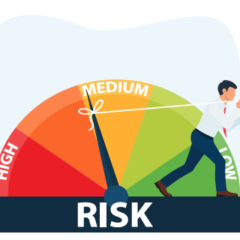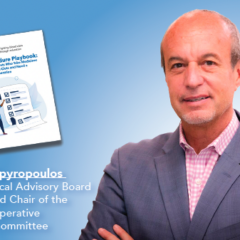Last updated on
A DOAC Deep Dive: Edoxaban
Updated October 2019
For the past several decades, warfarin has been the go-to anticoagulant (sometimes called a blood thinner), but newer treatments have emerged in the form of direct oral anticoagulants (DOACs). This new class of anticoagulants include apxaban, rivaroxaban, dabigatran, edoxaban, and betrixaban.
Here’s a closer look at edoxaban.
What is it?
Edoxaban, also known as Savaysa®, is a medication used to treat or prevent blood clots from forming. It’s prescribed to patients with atrial fibrillation (Afib) to reduce their risk of developing stroke caused by blood clots. It’s also used to treat patients with deep vein thrombosis (DVT) and pulmonary embolism (PE).
“Unlike warfarin, which has been the standard anticoagulant for over half a century, edoxaban is one of the DOACs used to treat patients who either had a clot or are at risk for having a clot,” explained Dr. Christian T. Ruff, an associate physician in the Cardiovascular Division at Brigham and Women’s Hospital in Boston, MA.
How does it work?
“Edoaxaban works by targeting a specific protein in the clotting cascade, which is how your body forms clots,” explained Dr. Ruff. “The clotting cascade can be both good or bad. In cases of Afib or venous thromboembolism (VTE or blood clots), we want to limit the body’s ability to form dangerous clots. Edoxaban is a factor-Xa inhibitor and it inhibits a very specific clotting factor to help thin the blood.”
By blocking the factor Xa, the clotting cascade is stopped and blood is not able to form a clot.
What’s unique about edoxaban?
“If you compare edoxaban to the other DOACs, there are a couple of important advantages,” said Dr. Ruff. “Edoxaban has very good efficacy, similar to the other agents, but it is one of the safest of the DOACs with respect to major bleeding. In its pivotal trial in Afib, it was associated with substantially less major bleeding than warfarin.”
“The other nice aspect is that it has a very well-tested dose scheme,” Dr. Ruff explained. The recommended dose is 60 mg once daily, but this can be adjusted to 30 mg daily to prevent excess blessing in patients who have impaired kidney function or low body weight. “We know that patients require different dosages to get just the right amount of anticoagulation—not too much or too little. The dosing strategy as tested in the pivotal clinical trial appears to both protect patients from stroke and lower their risk of serious bleeding.”
According to 2019 guidelines from the American Society of Clinical Oncology, edoxaban is also one of the recommended DOACs for treating blood clots in patients with cancer.
Edoxaban is a medication that is taken once daily. For patients who have trouble taking their medication, or who just prefer to only take medication once a day, this can be a major benefit.
What are the risks?
As with all anticoagulants, patients on edoxaban must be aware of the increased risk for bleeding.
“We know that the only risk for edoxaban, the only safety risk, which is true for all of the anticoagulants, is that it does increase your risk of bleeding,” explained Dr. Ruff. “But, there are no other major side effects of the medication, which has been tested in tens of thousands of patients.”
Dr. Ruff stressed that serious bleeding, while an important risk to know about, is fairly rare.
“The risk of serious bleeding with these medications is incredibly uncommon. At least 50% less than what we saw with warfarin,” he said. “We have to remind patients that because these drugs work by preventing clotting, it will increase their risk of nuisance bleeding, such as minor bruising or nosebleeds, and that these are not reasons to discontinue the medication.”
Patients can help manage their bleeding risk by avoiding risky behaviors, such as contact sports and drinking an excess of alcohol. They should also avoid drugs like aspirin or ibuprofen, which also increase the risk of bleeding, unless recommended by their healthcare provider.
In addition to managing bleeding risk, patients need to properly manage their medication to avoid a new blood clot. Patients on edoxaban, or any anticoagulant, should never stop their medication or change their dosage without talking to their healthcare provider first.
“If you miss even one or two doses of this medication, you’re at risk for forming a clot,” emphasized Dr. Ruff.



